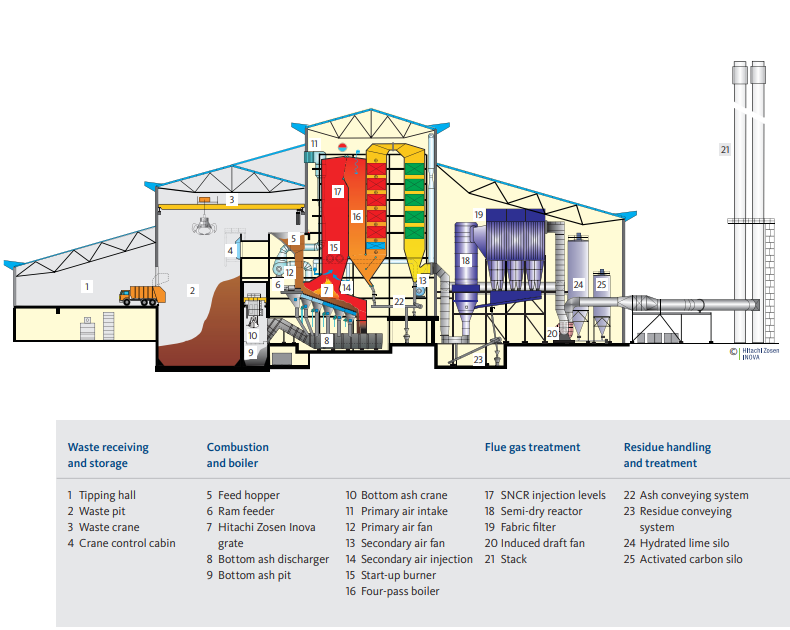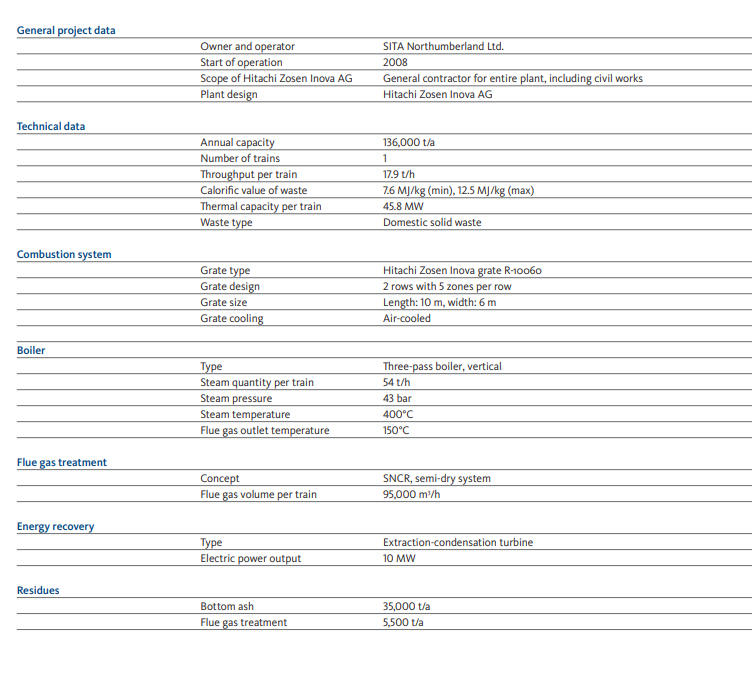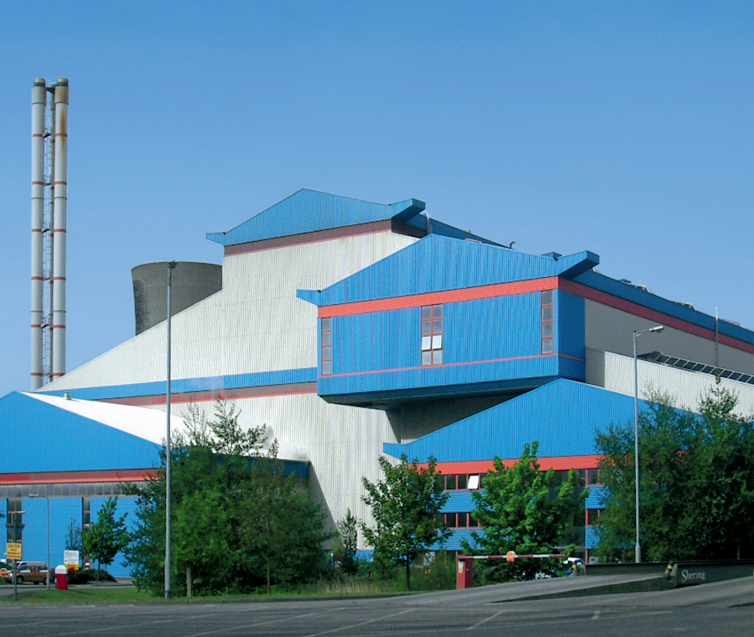Cleveland / UK
Cleveland / UK
SITA Northumberland Waste to Energy plant at Teesside – a successful cooperation between local authority and industry.
The extension of the Teesside Waste to Energy plant is a continuation of the successful, integrated waste management in the North East of England. In parallel, the technically independent concept of the third line provides the highest security with regard to availability. The additional line thermally treats 136,000 tonnes a year of residual household waste while exporting sufficient electricity to power more than 10,000 homes.
The Teesside Waste to Energy plant extension is run by SITA Northumberland Ltd., a joint venture between Sita UK, RBS and AXA to serve Northumberland County Council under a 25-year PFI contract. Von Roll Inova, today’s Kanadevia Inova AG, assumes the role of an EPC contractor and provides the complete turnkey facility. Civil construction started in April 2007, heavy erection began in November 2007 and the facility was handed over in 2009.
Integrated waste management.
The extension of the Teesside Waste to Energy plant carries out the integrated waste management of the existing facility with its already existing community recycling centre, ash recycling, and composting facility. The metal separation of ferrous and non-ferrous metals as well as the bottom ash recycling at the existing ash recycling facility adjacent to the site will contribute further to the integrated solution.
Reducing the greenhouse effect.
The Teesside Waste to Energy facility exports about 10 MW of electricity by using waste as a renewable resource. Therefore virgin energy sources can be saved. The electricity supplied to the national grid is equivalent to powering more than 10,000 homes.
The technical solution for ecological friendlyand economical energy recovery.
After waste is collected via kerbside recycling schemes or the network of Household Waste Recycling Sites, pre-treated waste is processed at the Energy Recovery facility. The residual waste is tipped into its independent bunker within the waste reception hall and placed by a crane of its own into the feed hopper of the process train, with a four-pass vertical boiler at a maximum thermal capacity of 45.8 MW. The boiler design was developed in order to suit the building envelope of the existing building. The waste then passes down a feed chute onto the two-row Kanadevia Inova grate. The moving grate allows an optimal burnout of the diverse waste fractions. In addition, a fully
integrated control system allows the rapid adjustments of combustion conditions for the safest and most efficient operation, possible. In the first pass of the boiler, the NOx reduction is provided by the Selective Non-Catalytic Reduction (SNCR) system using injected aqueous ammonia as the reducing agent. The process reduces the waste volume received by up to 90%. The burnt out bottom ash passes through the ash discharger onto an ash handling system within enclosed areas. The remaining ash is sent for processing and reuse for disposal.
Pyrolytic gases produced in the combustion process pass are mixed with secondary air, which is injected tangentially at high velocity into the post combustion chamber above the grate, resulting in intensive mixing and the throughout burnout of the hot gas. The thereby produced raw gas passes through a water tube boiler where it is cooled while the water of the closed steam condensate cycle is vaporised and superheated. The superheated steam is then expanded by means of a turbo-generator. As a result, electricity is produced to supply the facility thereby allowing island operation as well as the export of about 85% of the produced electricity to the national grid. After leaving the last pass of the boiler and having extracted as much energy as possible by still maintaining sufficient temperature levels for efficient and reliable removal of emissions, the cleaning takes place in the semi-dry system consisting of a reactor in combination with a fabric filter. The well proven semi-dry system technology keeps the plant in safe compliance with the emission limits of the European Union by using lime and activated carbon for removal of the gaseous pollutants including heavy metals and dioxins. Small particulates are separated in the fabric filter. The residues resulting of the flue gas treatment are then either recycled or sent for safe disposal by an appropriate facility. The cleaned flue gas is finally released into the atmosphere through the third stack.


